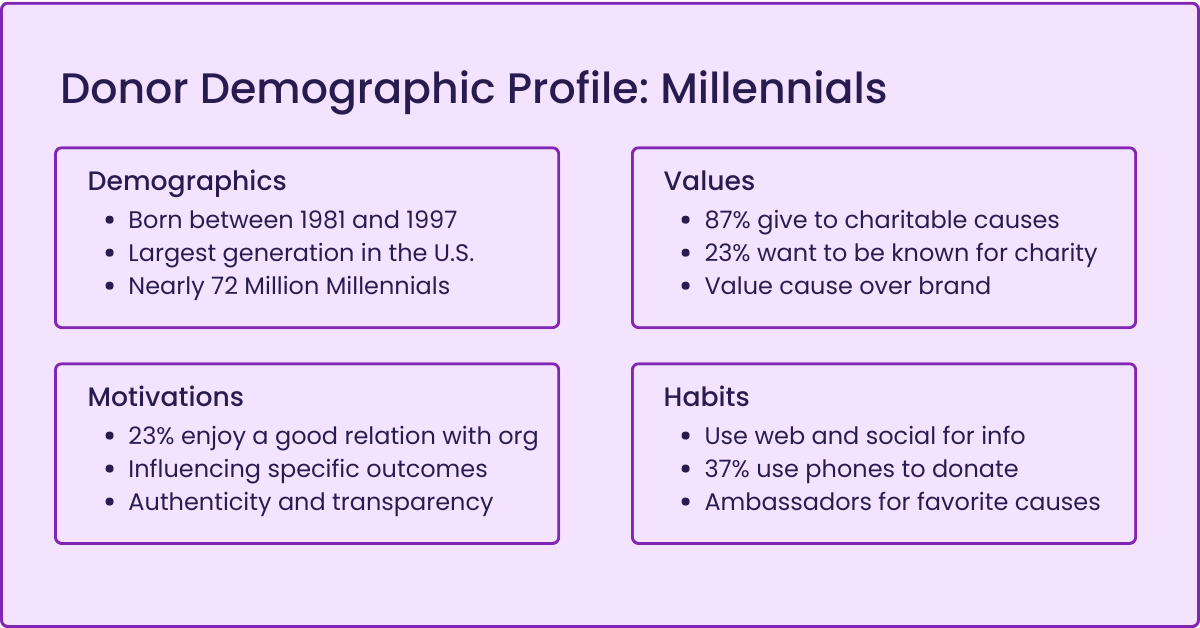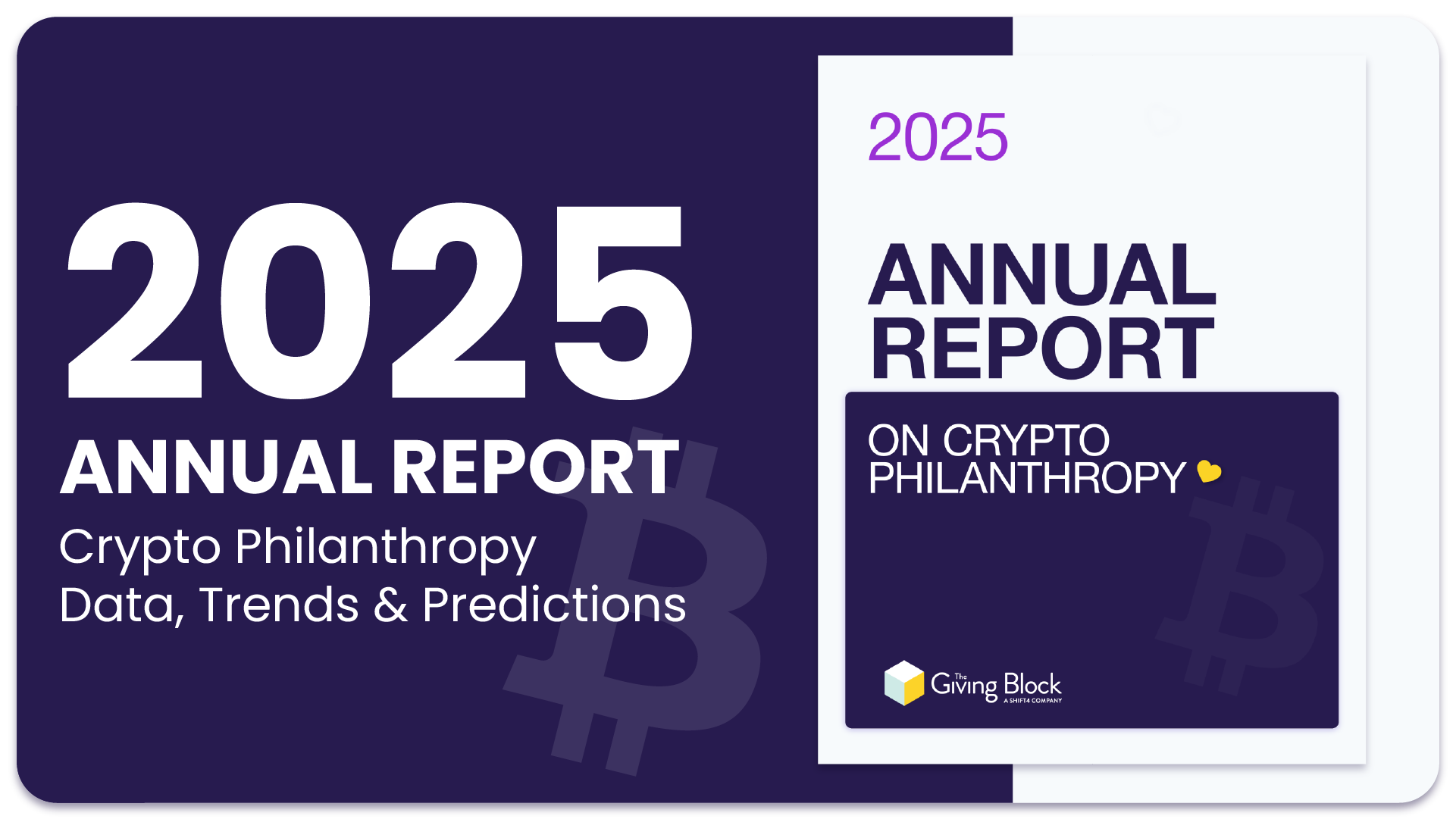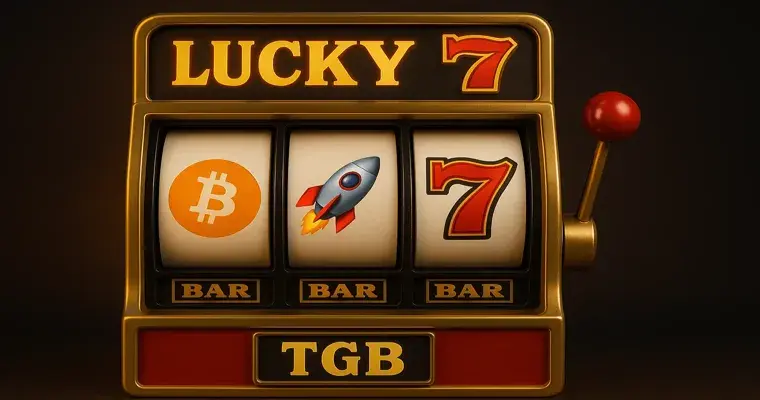To everything, turn, turn, turn. The Baby Boomers are passing down trillions of dollars in wealth to their children. This “Great Wealth Transfer” marks a new era for philanthropy, led by Gen X, Millennials and Gen Z.
Expect shifts in donor demographics and charitable giving methods to influence your stewardship tactics. So how will your organization approach fundraising in the decades ahead?
To raise more in the post-Boomer era, nonprofits will need to “embrace the new.” In this post, we’ll share helpful insights about some of these younger donors. Plus, we reveal several ways that innovative nonprofits are already adapting to this new chapter in charitable giving.
How does the Great Wealth Transfer impact nonprofits?
The children of Baby Boomers are set to inherit a historic amount of wealth by 2045. The potential value of the assets passed down ranges from $30 to $84 Trillion.
Younger generations—Gen X, Millennials and Gen Z—will soon contribute the lion’s share of the nation’s charitable donations. And with U.S. donors setting an all-time high of $557 Billion in contributions in 2023, the stakes are higher than ever. That’s why accounting for the Great Wealth Transfer and its impact should be high on every fundraiser’s list of priorities.
Fundraisers will need to brush up on generational differences
Studies have confirmed what we all know anecdotally to be true: younger donors and their parents do not share identical values or motivations. Take Millennial donors, for example. Millennials are highly motivated by causes they identify with or learn about through social media. As a result, they may give to a variety of charities over time. This behavior is a stark contrast to their parents, who tend to make annual gifts to the same organization year after year.

Knowing the difference between what different donors need can help you craft targeted messages and appeals for them on their preferred channels of communication.
By starting to break out these unique donor cohorts, even one at a time, you can set your organization apart from the thousands of nonprofits that broadcast one generic message to everyone.
Giving campaigns will need to integrate new tactics
As a cohort, younger donors are less responsive to some tried-and-true appeals, such as one-size-fits-all emails. Modern fundraising thrives on hyper-personalization and increasing digital communication to help your message stand out.
Keep in mind: the same donors you were asking for $5 from on Facebook ten years ago are now hitting their peak earning years. So while you should keep your expectations modest in your first efforts, don’t underestimate the power of Millennial donors.
Here are five pillars to consider as you explore what specific tactics works with your younger donors:
1. Get them involved
Invite them to join boards, committees and volunteer programs.
2. Share your process
Be transparent and authentic about your wins and struggles.
3. Use social media
Get your message to new audiences with the power of social.
4. Update your website
Optimize your online presence for search and easy navigation.
5. Personalize your ask
Tailor your fundraising appeals according to each cohort’s traits.
For inspiration on making these abstract concepts into concrete action items, watch Save the Children’s Ettore Rossetti and The Giving Block’s Pat Duffy discuss this very topic:
Nonprofits will need to embrace modern fundraising tools
Change is hard, particularly for nonprofits facing pressures to keep overhead costs low. But luckily, there are countless tools available for nonprofits.
From integration-friendly software to AI tools to make your work more efficient, here are a few ideas to consider for helping you steward gifts from the next generation of donors:
- Embracing crypto donors (e.g., our crypto fundraising solution)
- Getting efficient with AI (e.g., ChatGPT’s Nonprofit Navigator)
- Integrating your workflows (e.g. Zapier)
- Gamifying your fundraising (e.g., Tiltify)
- Boosting your social presence (e.g., TikTok)
- Using mobile text appeals (e.g., Rally Corp)
- Leveraging visual storytelling (e.g., Canva)
No matter the tools you choose, now is the right time to adjust your fundraising tactics and invest in solutions to raise more from today’s emerging philanthropists.
To make this a reality, be sure to research available tools and advocate for them in your next fiscal year’s budget. You’ll be glad you made the investment in your organization’s future.
Crypto donations epitomize this shift in generational giving
No other giving trend highlights the sweeping changes to the “donor mentality” quite like crypto donations. Consider the following facts together:
- The Great Wealth Transfer is the largest wealth transfer in history, with $30 to $84 Trillion being inherited by younger generations.
- Bank of America found that 75% of Millennial/Gen Z investors surveyed believe “it’s not possible to achieve above-average returns solely on traditional stocks and bonds.”
- Crypto investing is creating the largest wealth accumulation in history, according to Real Vision CEO Raoul Pal.
- Crypto donations are, on average, the donation method with the largest gift size over methods like cash gifts, stock donations, and DAF grants.
- For the first time, a majority of Forbes’ Top 100 Charities accepted crypto donations in 2023.
The signs all point to a new path forward for philanthropy, one that embraces modern giving trends, donor preferences, and digital technology. Does this sound new and exciting? We think so, too.
Your next step: invest in younger donors stewardship
After reading this, you may be wondering, “Are younger donors harder to engage?” Difficulty is a relative concept. But if your organization puts in the effort to discover what does and doesn’t work with younger donors, you’ll have data and insights to help you deliver a compelling targeted campaign that targets Millennials, Gen X and Gen Z donors.
These efforts may not always have immediate results, but will almost certainly pay off in the long run. Younger donors are already raising the bar for their previous charitable habits, and we expect them to break annual giving records many times over in the decades to come.
Our prediction? If nonprofits invest in effective fundraising solutions and use new tactics to engage these donors, The Great Wealth Transfer will be the best thing to happen to philanthropy.
Learn about our how our crypto fundraising solution helps nonprofits raise more from younger donors.



















